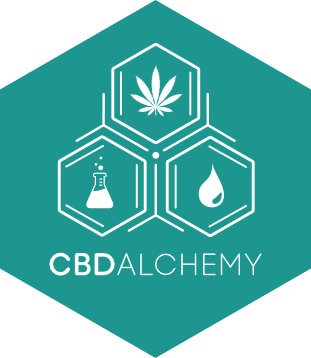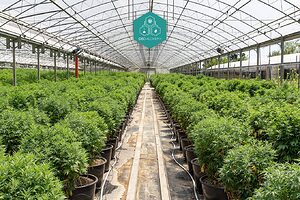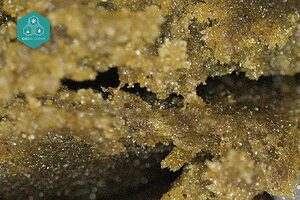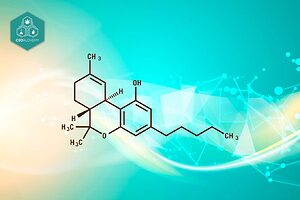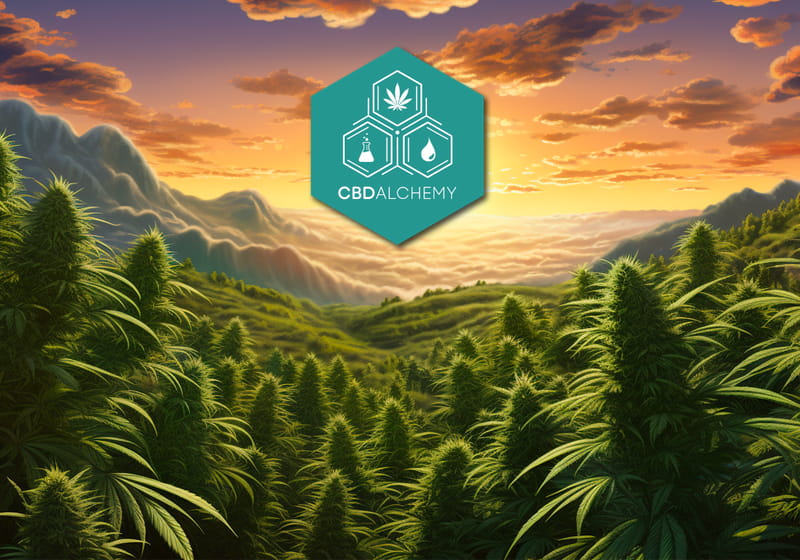Inflorescence describes the floral structure of a plant. There are several different types of inflorescence, which are defined based on the shape and arrangement of a plant’s buds and flowers along the stem, or axis. Both cannabis and “cannabis light” (aka hemp or CBD flower) have the same type of inflorescence. Read on to learn more!
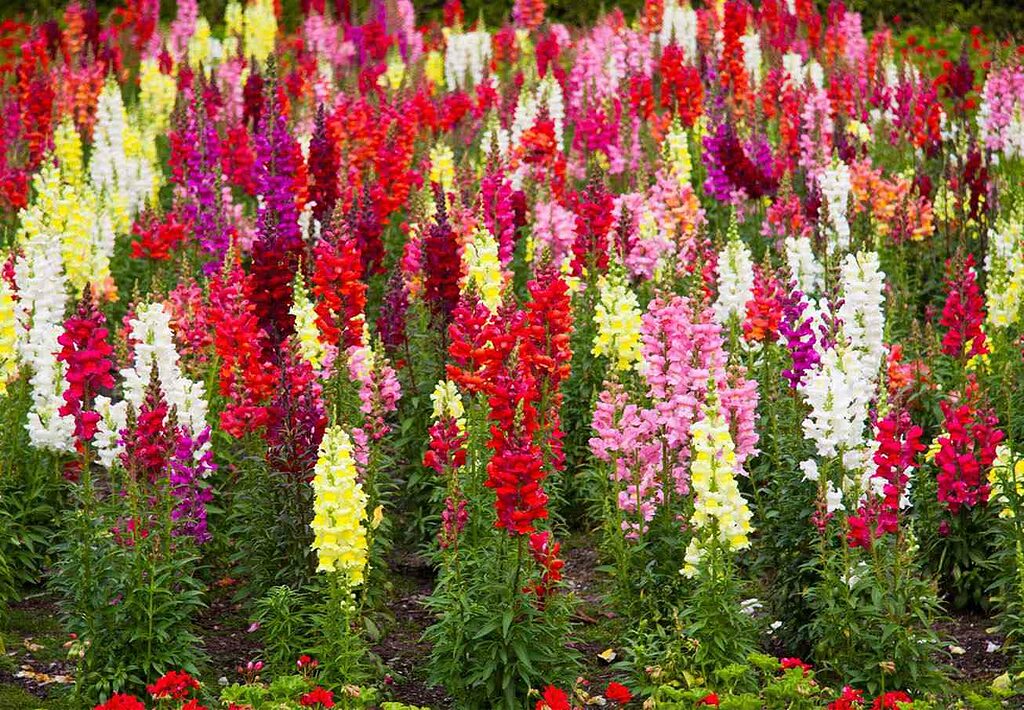
What are the different types of inflorescence?
There are two main types of inflorescence in the botanical world: racemose and cymose. These two categories can then be broken down into several different subcategories, which we will get into soon. But first, what are racemose and cymose inflorescence?
Racemose
A racemose inflorescence is also known as indeterminate inflorescence. This means that the stem does not end, or terminate, with a flower. Flowers are located all along the stem in an acropetal pattern– older flowers are the lowest on the stem and newer flowers grow at the top. This type of flowering allows the axis to continue to grow vertically as the flowers bloom and grow.
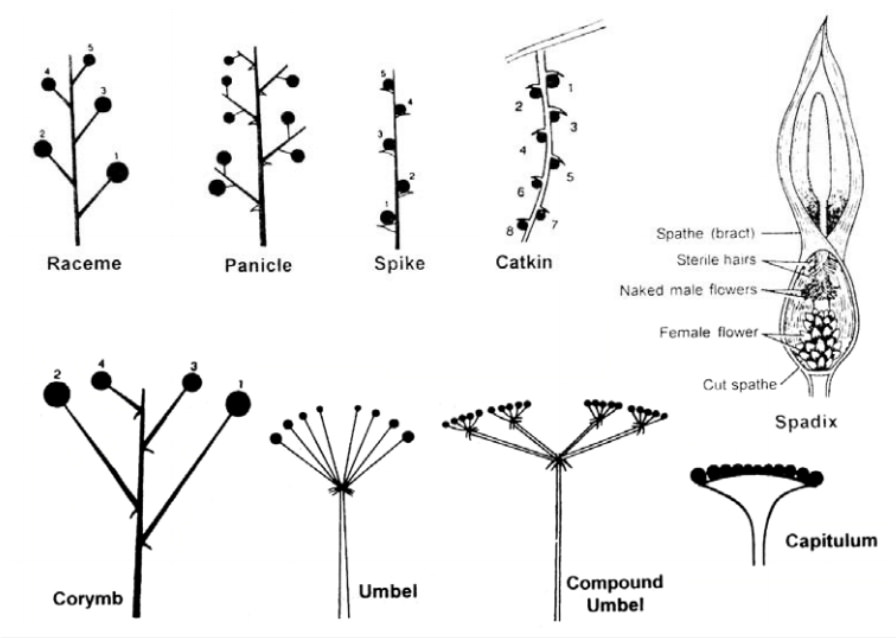
There are several types of inflorescence that fall under the racemose category. As you can see in the above diagram, these 8 types of flowers vary greatly, but what they all have in common is that there is no flower directly at the end of the stem.
This means that the central axis (stem) can continue to grow as flowers form. Because of this, plants with racemose inflorescence typically grow taller than those with cymose inflorescence. The 8 types of racemose inflorescence are:
- Raceme
- Panicle
- Spike
- Catkin
- Spadix
- Corymb
- Umbel
- Capitulum
Cymose
Plants with cymose inflorescence have a flower at the very tip of the stem. It is also called determinate inflorescence. In cymose inflorescence, the flowers grow in a basipetal succession, which means that the oldest flower is the one at the tip of the stalk, and the newer flowers grow beneath. This limits the growth of the main axis since upward growth stops when buds form. There are four main types of cymose inflorescences:
- Scorpiod
- Helicoid
- Biparous cyme
- Multiparous cyme
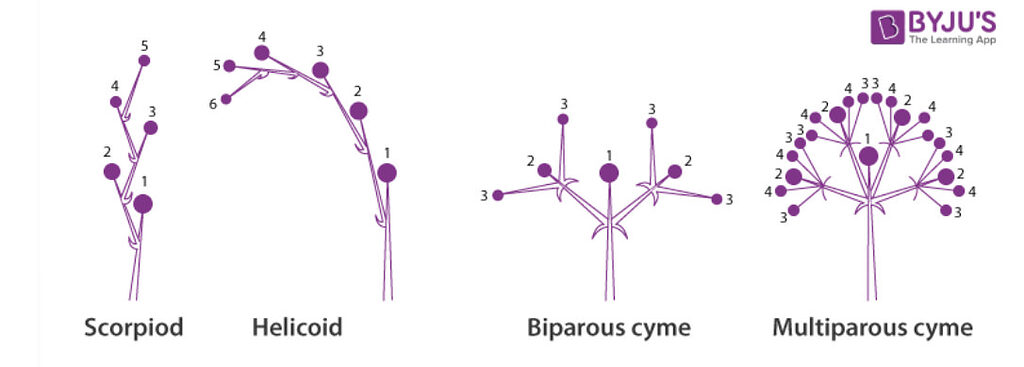
What type of flower does cannabis have?
Cannabis is in the Cannabaceae family, which also includes hops, another well-known plant (Humulus). The family has grown in recent years to include 9 other kinds (Stevens 2001).
Cannabis and hemp inflorescence is different in female and male plants. Plants like this are called dioecious. There are also hermaphrodite cannabis plants, which have male and female flowers growing on the same plant (monoecious).
The female cannabis / hemp plant (pistillate) has a racemose inflorescence pattern. More specifically, it is a highly branched compound raceme.
The flowers on a raceme grow on short stalks called pedicels that sprout from the main axis. Each pedicel has one flower. Other plants that have a raceme inflorescence are snapdragons, hyacinth, and mustard, among others.
The male cannabis plant (staminate) does not grow flowers in the same way as female plants do. While the female cannabis plant has flowers that grow in a raceme pattern, male cannabis plants sprout pollen sacs instead of flowers.
Male plants actually have what’s called “mixed inflorescence,” since they have cymose clusters that form off of a central racemose axis. Staminate (male) plants tend to be taller and less sturdy than pistillate (female) plants.

Are hemp and cannabis flowers the same?
The inflorescence of cannabis and hemp (cannabis light) are the same. Both of their flowers (on female plants) grow in a highly branched compound raceme pattern.
While hemp and cannabis flowers both have racemose raceme inflorescence, they differ in that hemp (also known as “cannabis light”) contains less than 0,2% THC (or 0,3% in the USA and less than 1% in countries such as Swizterland, Urugay and Colombia), while adult use cannabis contains up to 20-30% THC.
But this difference in THC level can only be determined through lab testing. If you look at a cannabis plant and a hemp plant side-by-side, they look almost identical.
What is obtained from the inflorescences of hemp plants?
While CBD and other cannabinoids are present throughout the stalks and leaves of the plant as well, the inflorescence has the highest concentration of cannabinoids. This means that the flowers of cannabis light can be used for several therapeutic purposes.
CBD flowers can be purchased on their own to be smoked with a pipe or rolled into joints. You can also use hemp buds to create infusions or make CBD-butter to cook and bake with.
Hemp buds can also be processed and made into CBD hashish, CBD oil, CBD extracts, or CBD crystal isolate.
CBD oil can then be infused into wellness products that can be used for beauty, skincare, and sports medicine applications.
The inflorescences of hemp plants can provide us with so many different CBD-rich products that can provide benefits. CBD Alchemy is proud to offer organically grown, safely extracted, and minimally processed, effective CBD products that you can trust. Shop now!
Sources:
Types of Inflorescence: 5 Types (With Diagram) | Plants
https://www.biologydiscussion.com/plants/inflorescence/types-of-inflorescence-5-types-with-diagram-plants/70252
Racemose Inflorescence
https://byjus.com/neet/racemose-inflorescence/
Cymose Inflorescence
https://byjus.com/neet/types-of-cymose-inflorescence/
Cannabis Inflorescence
https://american-safe-access.s3.amazonaws.com/documents/AHP_Cannabis_Monograph_Preview.pdf
